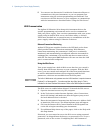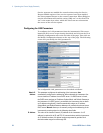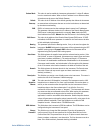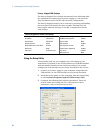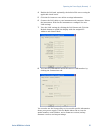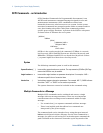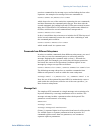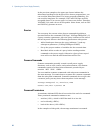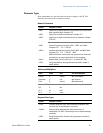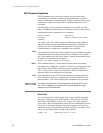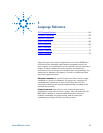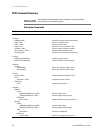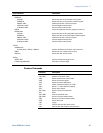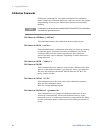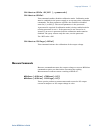4 Operating the Power Supply Remotely
60 Series N5700 User’s Guide
In the previous examples, the upper-case letters indicate the
abbreviated spelling for the keyword. For shorter program lines, you
can send the abbreviated form. For better program readability, you
can send the long form. For example, VOLT and VOLTage are both
acceptable forms. You can use upper- or lower-case letters. Therefore,
VOLTAGE, Volt, and volt are all acceptable. Other forms, such as VOL
and VOLTAG, generate an error.
Queries
You can query the current value of most commands by adding a
question mark to the command (VOLTage?, VOLTage:TRIGgered?). If
a query contains a parameter, place the query indicator at the end of
the last keyword. Observe the following precautions with queries:
Add a blank space between the query indicator (?) and any
subsequent parameter. (VOLTage:TRIGgered? MAX)
Set up the proper number of variables for the returned data.
Read back all the results of a query before sending another
command to the power supply. Otherwise a Query Interrupted
error will occur and the unreturned data will be lost.
Common Commands
Common commands generally control overall power supply
functions, such as reset, status, and synchronization. All common
commands consist of a three-letter mnemonic preceded by an
asterisk: *RST *IDN? *SRE 8
You can combine common commands with subsystem commands in
the same message. Use semicolons to separate the common command
from the subsystem commands. Common commands do not affect the
command path; you may insert them anywhere in the message.
VOLTage:TRIGgered 10;:INITiate;*TRG
OUTPut OFF;*RCL 2;OUTPut ON
Command Terminators
A terminator informs SCPI that it has reached the end of a command.
Three permitted command terminators are:
newline (<NL>), which is ASCII decimal 10 or hex 0A.
end or identify (<END>)
both of the above (<NL><END>).
In the examples of this guide, the message terminator is assumed.



